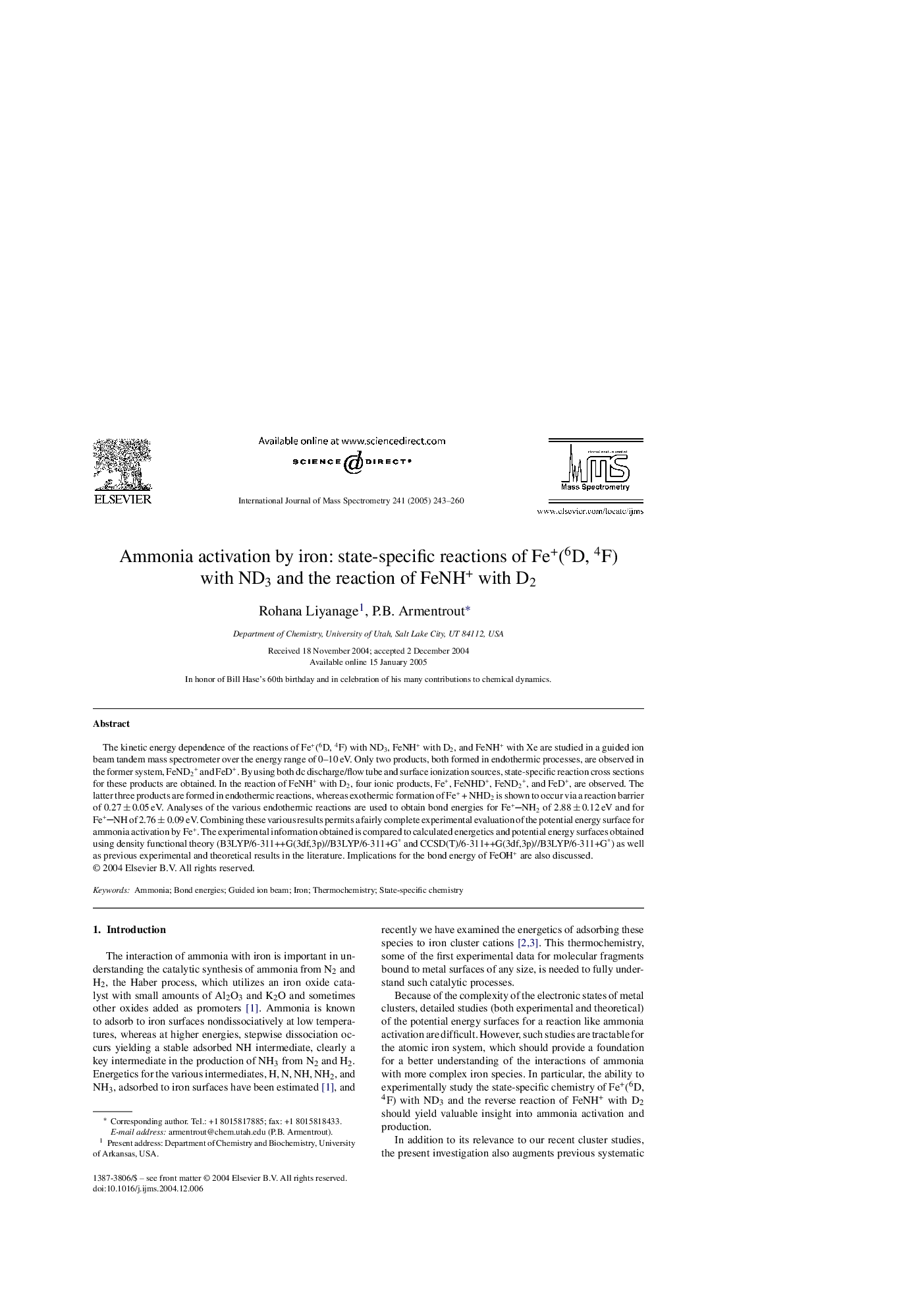| Article ID | Journal | Published Year | Pages | File Type |
|---|---|---|---|---|
| 9746762 | International Journal of Mass Spectrometry | 2005 | 18 Pages |
Abstract
The kinetic energy dependence of the reactions of Fe+(6D, 4F) with ND3, FeNH+ with D2, and FeNH+ with Xe are studied in a guided ion beam tandem mass spectrometer over the energy range of 0-10 eV. Only two products, both formed in endothermic processes, are observed in the former system, FeND2+ and FeD+. By using both dc discharge/flow tube and surface ionization sources, state-specific reaction cross sections for these products are obtained. In the reaction of FeNH+ with D2, four ionic products, Fe+, FeNHD+, FeND2+, and FeD+, are observed. The latter three products are formed in endothermic reactions, whereas exothermic formation of Fe+ + NHD2 is shown to occur via a reaction barrier of 0.27 ± 0.05 eV. Analyses of the various endothermic reactions are used to obtain bond energies for Fe+NH2 of 2.88 ± 0.12 eV and for Fe+NH of 2.76 ± 0.09 eV. Combining these various results permits a fairly complete experimental evaluation of the potential energy surface for ammonia activation by Fe+. The experimental information obtained is compared to calculated energetics and potential energy surfaces obtained using density functional theory (B3LYP/6-311++G(3df,3p)//B3LYP/6-311+G* and CCSD(T)/6-311++G(3df,3p)//B3LYP/6-311+G*) as well as previous experimental and theoretical results in the literature. Implications for the bond energy of FeOH+ are also discussed.
Related Topics
Physical Sciences and Engineering
Chemistry
Analytical Chemistry
Authors
Rohana Liyanage, P.B. Armentrout,
